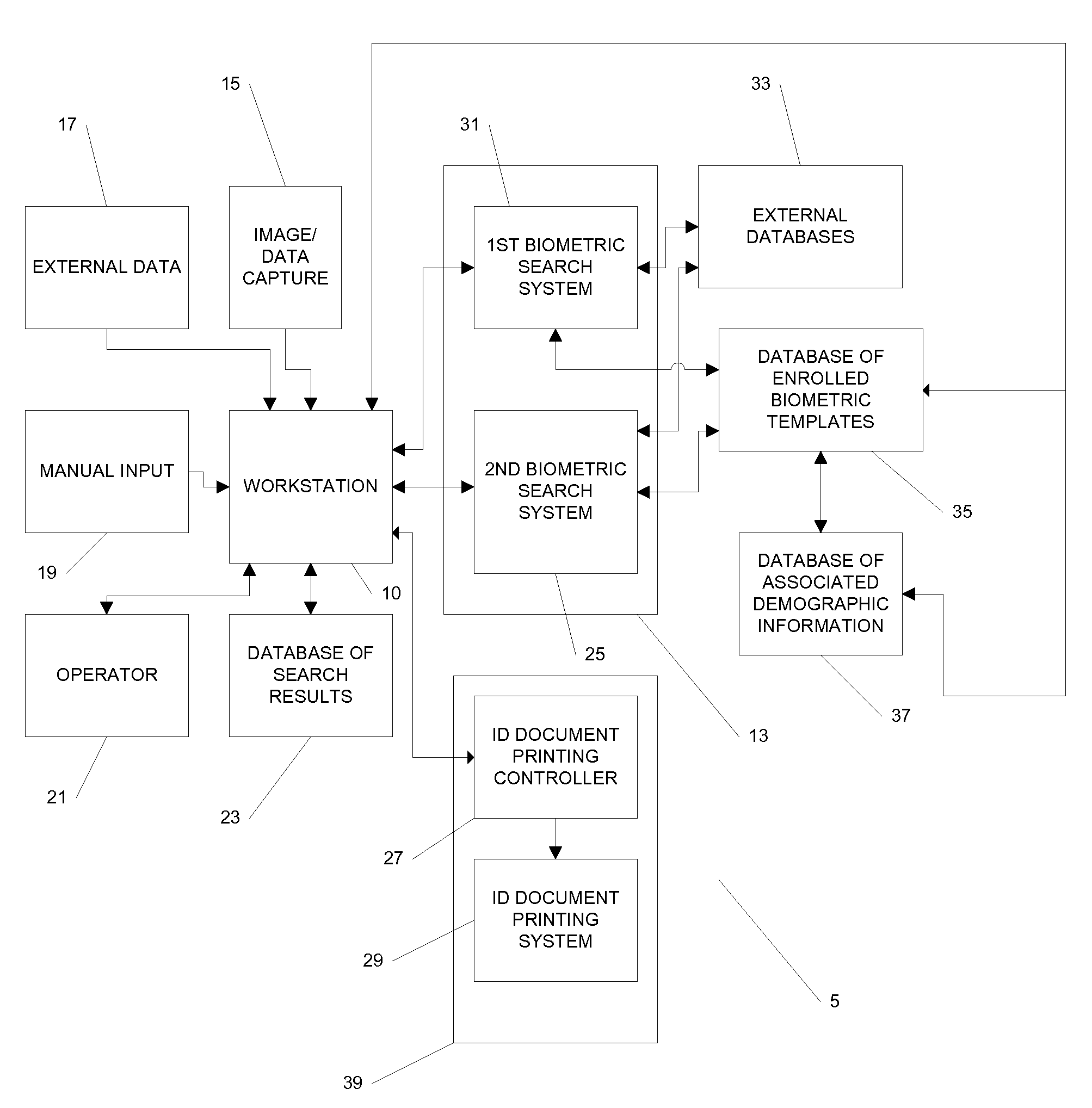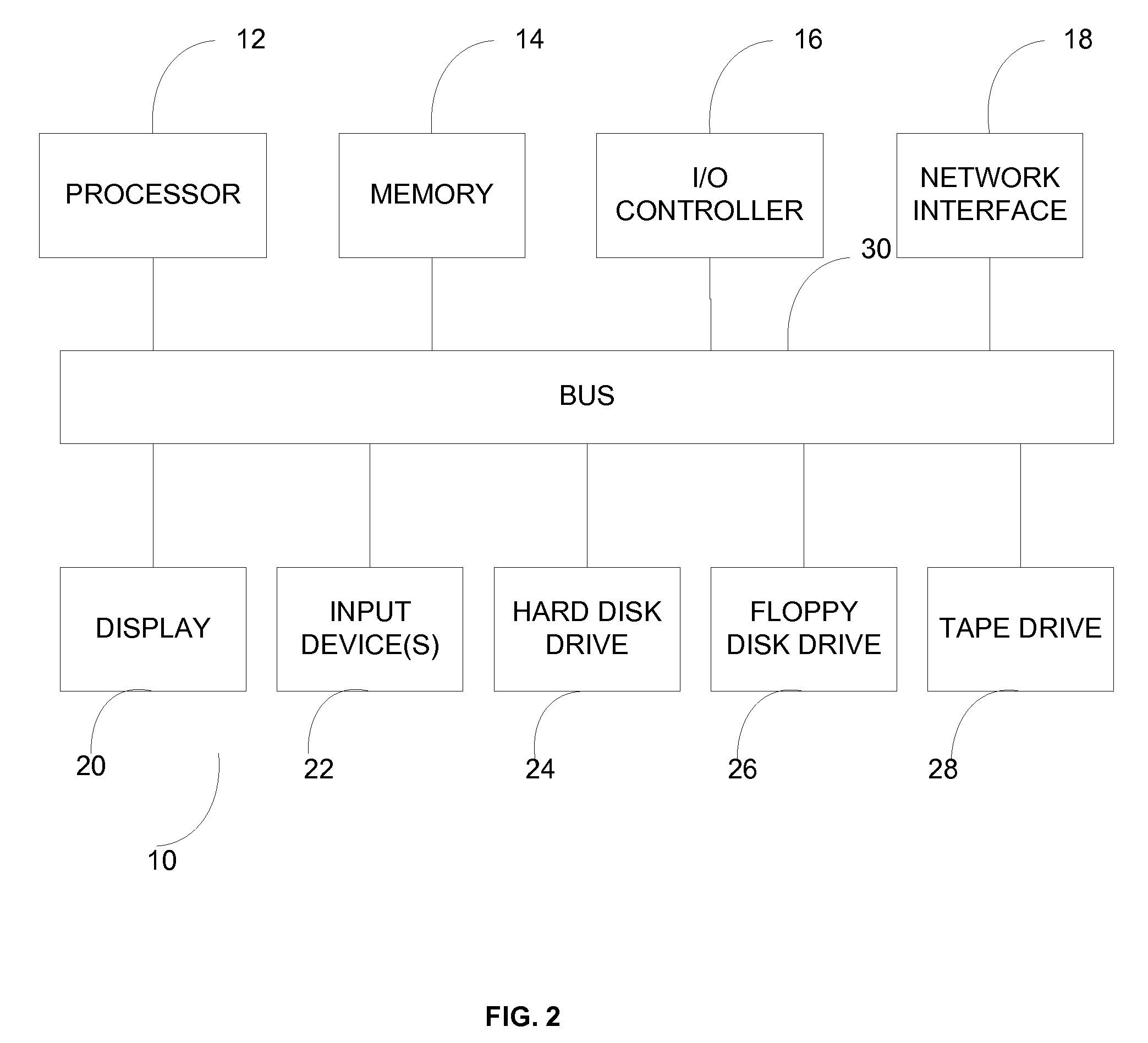Systems and Methods for Recognition of Individuals Using Multiple Biometric Searches
a biometric search and recognition system technology, applied in the field of biometric search system and recognition of individuals using multiple biometric searches, can solve the problems of identity theft and other related fraudulent identification activity, which can become a major problem to the economy, safety and stability of the united states, and create wholly false identification documents, etc., to improve the biometric search process, reduce costs, and accelerate processing time
- Summary
- Abstract
- Description
- Claims
- Application Information
AI Technical Summary
Problems solved by technology
Method used
Image
Examples
Embodiment Construction
[0076]Before describing various embodiments in detail, it is helpful to define some terms used herein and explain further some of the environments and applications in which at least some embodiments can be used.
[0077]Identification Documents
[0078]In the foregoing discussion, the use of the word “ID document” or “identification document” or “security document” is broadly defined and intended to include all types of ID documents, including (but not limited to), documents, magnetic disks, credit cards, bank cards, phone cards, stored value cards, prepaid cards, smart cards (e.g., cards that include one more semiconductor chips, such as memory devices, microprocessors, and microcontrollers), contact cards, contactless cards, proximity cards (e.g., radio frequency (RFID) cards), passports, driver's licenses, network access cards, employee badges, debit cards, security cards, visas, immigration documentation, national ID cards, citizenship cards, social security cards, security badges, ce...
PUM
 Login to View More
Login to View More Abstract
Description
Claims
Application Information
 Login to View More
Login to View More - R&D
- Intellectual Property
- Life Sciences
- Materials
- Tech Scout
- Unparalleled Data Quality
- Higher Quality Content
- 60% Fewer Hallucinations
Browse by: Latest US Patents, China's latest patents, Technical Efficacy Thesaurus, Application Domain, Technology Topic, Popular Technical Reports.
© 2025 PatSnap. All rights reserved.Legal|Privacy policy|Modern Slavery Act Transparency Statement|Sitemap|About US| Contact US: help@patsnap.com



